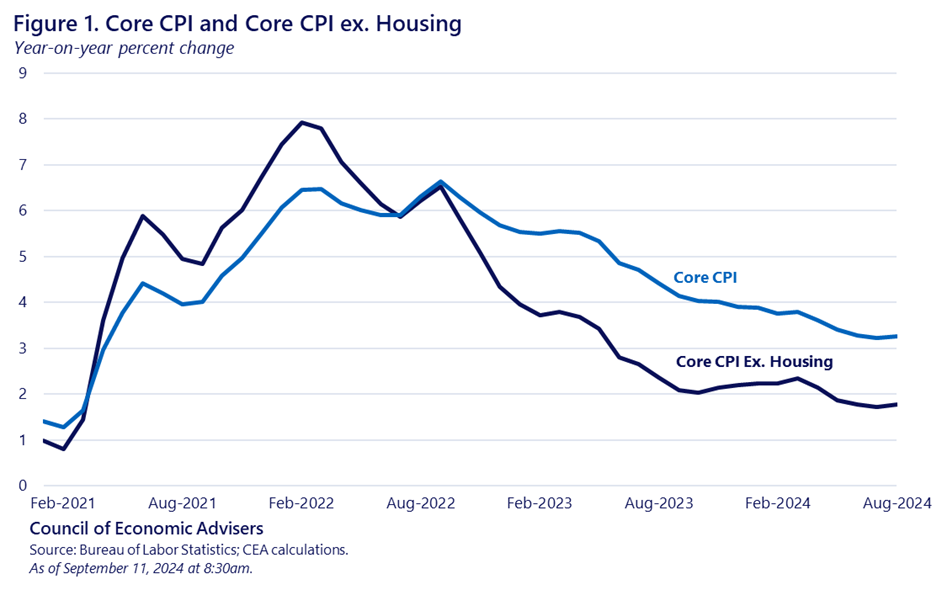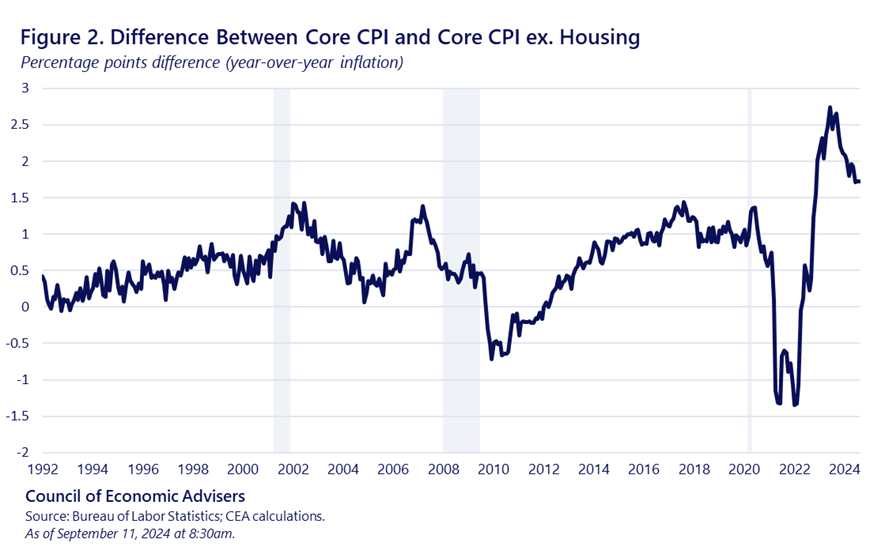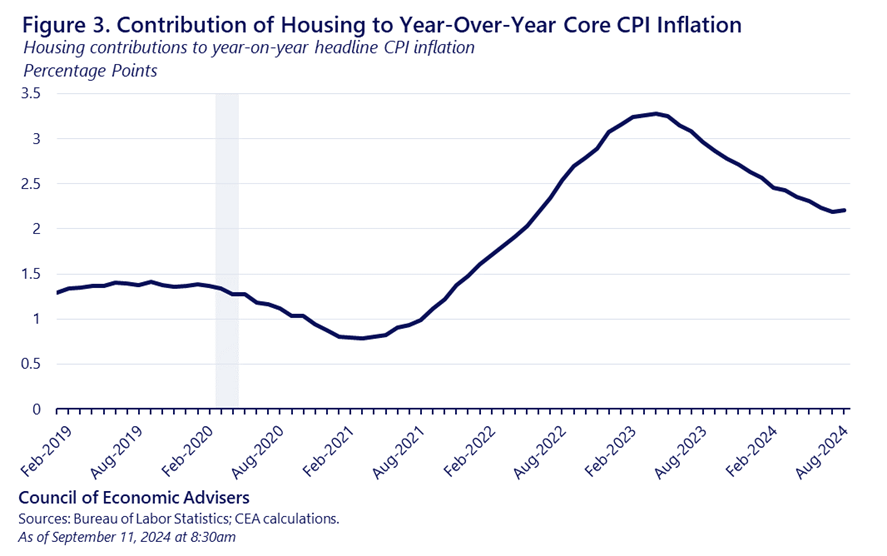The Role of Housing in U.S. Inflation
Overall CPI inflation came in at expectations at 0.2% last month and 2.5% over the past year. The yearly rate is down from 2.9% last month and the lowest yearly growth rate since February 2021, indicating that overall inflation continues to ease. Core inflation—the subject of this post—came in a tick above expectations on a monthly basis—0.3% versus 0.2% expected although at the expected yearly rate of 3.2%.
See CEA’s X thread for details, including the fact that housing inflation ticked up in August and, as BLS notes, is “the main factor” in this month’s inflation. While we are careful not to over-interpret any one monthly data point, the pressure from housing on overall inflation has been ongoing and is clearly related to the very tight housing market and the decade-in-the-making shortage of affordable housing.
The figure below shows yearly CPI core inflation with and without housing costs since 2021.[1] It is evident that housing costs have been a major contributor to core inflation since price pressures began to ease. While core inflation, as mentioned, was 3.2% over the past year, core prices without housing rose at a much slower pace of 1.8% as shown in Figure 1. This is due both to the rate of housing inflation itself as well as the fact that housing inflation is about 45 percent of the core CPI basket.

Figure 2 takes a longer-term perspective, showing that the spread between these two measures has been uniquely elevated in recent years.

In August, housing contributed 16 basis points (bps) to inflation, accounting for almost all of the 19 bps increase in overall prices. To be sure, core services ex housing remains elevated, contributing 9 bps to overall inflation in August, but this contribution was offset by declines in core goods and energy prices this month. Core goods prices have fallen in 14 of the last 15 months and 1.7% over the last year, while core services ex housing prices have risen 4.5% over the last year.
Figure 3 shows the contribution of housing to yearly core inflation over the longer term, once again showing housing’s outsized role in inflation. Fortunately, housing inflation has eased somewhat in recent months, and has fallen 3 percentage points from its peak in April 2023.

The point of these calculations is twofold. First, it would be a mistake to conclude we have not made disinflationary progress in most components of core CPI inflation. In fact, on a yearly basis, core inflation is down more than half from its peak rate of 6.6% in September 2022. And when we take housing out of the core, it is, as noted, down to a relatively low yearly rate of 1.8%.
The second point, however, is what these housing price trends show about a structural supply shortfall in the U.S. housing market. This shortfall, which has evolved over at least a decade, is an issue that CEA has analyzed in great detail, with an emphasis on the factors behind the shortage. Even more importantly, we explain the policies that the Biden/Harris administration has proposed to significantly ameliorate this shortfall. We believe those measures, which require Congressional approval, could quickly begin to add 2-3 million units of affordable housing. This would very significantly reduce the shortfall in affordable housing, with a commensurate impact on price.
The sooner we can get this agenda under way, the better for American households.
[1] CPI shelter inflation is primarily made up of rent of primary residence and owners’ equivalent rent as well as smaller categories such as lodging away from home (i.e., hotels). We define CPI housing inflation as the combination of rent of primary residence and owners’ equivalent rent, which makes up about 95% of shelter inflation.
